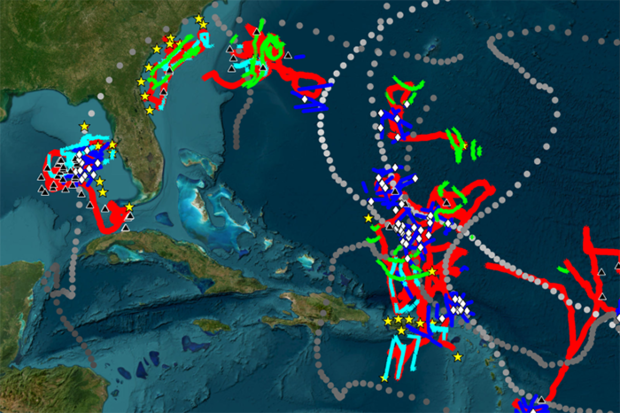NOAA pioneers new ways to advance hurricane forecasting

2023 NOAA-Saildrone Atlantic Hurricane Mission coordination effort. Credit: NOAA

2023 NOAA-Saildrone Atlantic Hurricane Mission coordination effort. Credit: NOAA
November 30th marks the official end to the 2023 Atlantic hurricane season. Scientists and forecasters from across NOAA pushed boundaries as they worked throughout this active season to conduct crucial tropical cyclone research that will strengthen our ability to forecast future tropical cyclone development and better protect those most affected.
NOAA’s Atlantic Oceanographic & Meteorological Laboratory (AOML) and Aircraft Operations Center flew and supported 54 research and operational missions on NOAA Hurricane Hunter aircraft into 7 tropical disturbances, with five of those ultimately becoming hurricanes (sustained winds of 74 mph or higher) and three becoming major hurricanes (sustained winds of 111 mph or higher).
Research missions were conducted in partnership with NOAA’s Office of Marine and Aviation Operations (OMAO) and the Office of Naval Research’s rapid intensification and moisture and aerosol programs. Operational missions were requested by NOAA’s National Hurricane Center and Environmental Modeling Center to collect data and observations that are crucial for improving track and intensity forecasts. The crews provided 188 tail Doppler radar analyses, released 1274 dropsondes, and continued experimenting with new cutting-edge drone technologies.